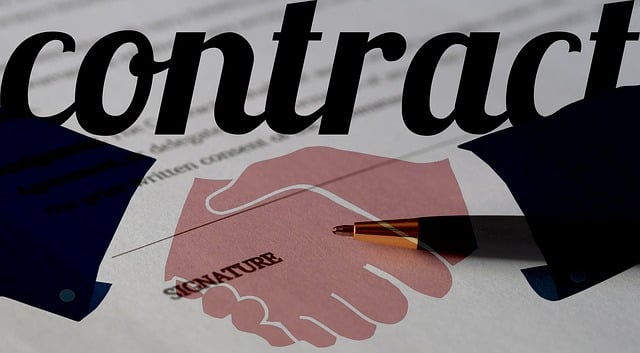Understanding student rental agreements is crucial for a smooth college housing experience. This guide clarifies essential lease terms like duration, rent payments (including late fees), security deposits, maintenance responsibilities, subletting rules, parking, pets, and communication. By familiarizing themselves with these clauses, students can avoid issues, foster positive living environments, and navigate rental contracts confidently. Key lease types include fixed-term, month-to-month, and subletting agreements, each with unique rights and obligations. This knowledge empowers students to make informed decisions, ensuring a legally protected tenancy aligned with their academic calendar.
Navigating college life often includes finding affordable housing, which leads many students to rental contracts. Understanding these agreements is crucial for a smooth living experience. This comprehensive guide delves into the essential aspects of lease terms explained, focusing on what students need to know about student rental agreements and their rights. From recognizing different types of agreements and their implications to deciphering key lease clauses, this student lease guide equips readers with knowledge to make informed decisions. By learning about rental contract terms, students can avoid hidden costs and ensure favorable conditions.
- Lease Terms Explained: Basic Components of a Student Rental Agreement
- – Definition of key terms used in rental contracts
- – Duration, rent amount, and payment schedules
- Student Rental Agreements: Types and Their Implications
- – Different types of agreements (month-to-month, fixed-term)
- – Advantages and disadvantages for students
Lease Terms Explained: Basic Components of a Student Rental Agreement

When it comes to renting an off-campus accommodation for college, understanding the lease terms is crucial for any student. A student rental agreement is a legal contract between the landlord and tenant that outlines the rights and responsibilities of both parties. It’s a comprehensive guide that covers various aspects of tenancy, ensuring a smooth living experience for students.
The basic components of a student rental agreement include key clauses such as the lease duration, rent amount and due date, security deposit policies, maintenance responsibilities, and rules regarding subletting or guests. Additionally, it may feature provisions related to parking, pet ownership, and communication channels for addressing any issues that arise during the tenancy period. Familiarizing oneself with these lease terms is essential to avoid misunderstandings and ensure a positive living environment.
– Definition of key terms used in rental contracts

When it comes to renting a place while studying, students often encounter unfamiliar terminology in their rental contracts. It’s crucial to understand these key terms to avoid any misunderstandings or unexpected issues. In this student lease guide, let’s demystify some common rental contract terms. A lease term refers to the duration of the agreement between the landlord and tenant, usually specified in months or years. It outlines when and how the tenancy begins and ends, which is essential for planning purposes.
Another critical aspect are lease clauses. These are specific conditions stated within the contract that cover various aspects of the tenancy. For instance, clause on rent amount and due dates ensures both parties agree on payment terms. A late fee policy clause defines consequences for late payments. Additionally, clauses addressing maintenance responsibilities, subletting restrictions, and termination procedures are vital to know as they protect the rights of both landlords and students. Understanding these lease terms explained in detail can empower students to make informed decisions when signing their student rental agreements.
– Duration, rent amount, and payment schedules

When it comes to student rental agreements, one of the first things to understand is the duration of the lease and how rent is structured. Leases for students often vary in length, ranging from several months to a year or more. This flexibility caters to academic terms and allows students to adjust their living situations accordingly. The rent amount is typically outlined in the student lease guide and can be influenced by location, property type, and market rates. It’s crucial to understand what’s included in the base rent and whether any additional fees apply.
Payment schedules are another critical aspect of rental contracts for college students. Most agreements require monthly payments, usually due on the first or fifth day of each month. Some leases may also specify a late fee for payments received after the due date. Students should be aware of these clauses and plan their budgets accordingly to avoid any financial penalties. Understanding lease terms explained in these contracts is essential for maintaining a smooth tenancy experience.
Student Rental Agreements: Types and Their Implications

Student Rental Agreements: Types and Their Implications
When searching for a place to live while attending college, understanding lease terms explained in student rental agreements is crucial. These agreements come in various types, each with its own set of rights and responsibilities for both students and landlords. Knowing the difference between fixed-term, month-to-month, and subletting leases is essential for navigating the student lease guide. By comprehending these rental contract terms, students can avoid unexpected fees, understand break clause policies, and know their options if they need to move out before the lease ends.
Different lease clauses students should look out for include those related to security deposits, maintenance responsibilities, and restrictions on pet ownership or smoking. Knowing what is expected of them and what protections are in place can empower students to make informed decisions when signing a rental contract. Understanding leases allows students to protect themselves legally, ensuring they have a clear picture of their duties and the landlord’s obligations throughout the tenancy period.
– Different types of agreements (month-to-month, fixed-term)

When it comes to renting a place while attending college, knowing your rights and responsibilities is paramount. Student rental agreements can vary in structure, offering options like month-to-month stays or fixed-term leases. Month-to-month arrangements provide flexibility, allowing tenants to cancel with shorter notice but often come with higher rent increases at the end of each term. In contrast, fixed-term leases offer stability by locking in a rate for a specific duration, typically a semester or academic year, but may require more advanced notice for termination.
Understanding lease clauses is crucial for students. These contracts outline rules regarding payment deadlines, maintenance responsibilities, pet policies, and subletting restrictions. They also detail the consequences of breaking the lease, such as early termination fees or damage deposits. Familiarizing yourself with these terms ensures a smooth living experience and helps avoid unexpected financial burdens during an already demanding time in your academic journey, making this a valuable component of any student lease guide.
– Advantages and disadvantages for students

For college students, navigating student rental agreements can be a new and sometimes daunting experience. On one hand, leasing offers stability and control over living arrangements, allowing students to choose their ideal location, roommates, and customizable lease terms explained that align with their academic calendar. Student rental agreements also provide protection under specific lease clauses students can benefit from, such as provisions for reasonable maintenance and repairs, privacy, and security deposits. These advantages are especially significant for those transitioning from living at home or facing the complexities of a new city.
However, student rental agreements come with disadvantages too. Students might face limited flexibility in changing lease terms due to strict rules around breaking leases, which can be problematic if unexpected circumstances arise. Additionally, some student rentals may lack essential amenities or have hidden fees not initially disclosed. Understanding leases is crucial for students to avoid unpleasant surprises and ensure they are protected under the law. A comprehensive student lease guide can empower them to carefully review rental contract terms before signing.






